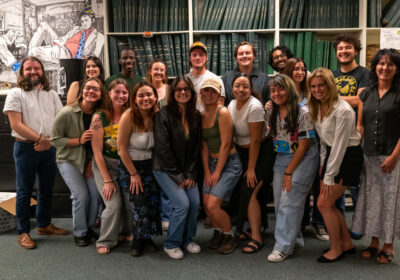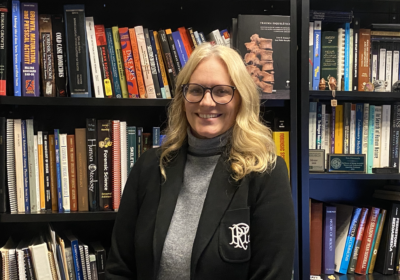Spray paint and streets, graffiti and galleries
Decades ago, street art might have been considered synonymous with vandalism, but different perspectives question whether it’s more of an art or a crime – and legal venues for it now exist.
In the ’70s and ’80s, spray painters started a counterculture movement by placing their names on buildings and subway cars. Yet now some street artists have been able to gain widespread recognition.
Graffiti artists like Shepard Fairey and Bansky now have had works displayed inside galleries across the globe – Bansky even recently released a film called “Exit Through the Gift Shop,” which tackled concepts of art.
James Hendrickson, a junior majoring in health science, said good street art is meant to beautify the community.
“The best street art leaves viewers with a thought or emotion,” Hendrickson said. “Graffiti tagging is just marking your territory. It’s like peeing on a wall.”
These territorial markings that are also called “tags” – often found in large cities like Tampa – mark street art’s origins.
A New York Times article from 1971 titled “‘Taki 183′ Spawns Pen Pals” helped make tagging famous. The article focused on a Manhattan teenager who wrote his tag wherever he went in New York and spawned countless copycats.
Since then, artists like Doze Green and Barry McGee have made the leap from the street to the gallery.
Wes Roos, who recently graduated from USF with a bachelor’s in studio art, said he initially had no background in fine art but became interested in street art.
Roos said that pieces like Green’s and McGee’s influenced his decision to switch majors from architecture, and describes his own work as street art.
“On the street or on the gallery wall, it’s more than a name,” he said.
However, Roos said he does not condone vandalism and supports “coordinated projects like murals – things that are more celebratory.”
“Plus, you don’t have to worry about being arrested,” he said.
USF’s Contemporary Art Museum (CAM) hosted a gallery exhibit in 2005 that featured work by street artists like Fairey and McGee.
According to the CAM website, “Beautiful Losers: Contemporary Art and Street Culture,” was the “work of a diverse group of visual artists that have emerged from aspects of street culture loosely organized around the subcultures of skateboarding, graffiti, punk and hip-hop in urban U.S. cities.”
USF Institute for Research in Art associate director Alexa Favata said the exhibit’s opening diverged from the gallery’s typical audience.
“The crowd was a mix of regular museum guests as well as skaters and punk artists,” Favata said. “‘Beautiful Losers’ came to (CAM), who developed partnerships with the Skatepark of Tampa and Blake High School.”
Favata said students at Blake were taught how to make zines – small print publications meant to “expand visibility” of subcultures. Zine pieces were also included in “Beautiful Losers.”
The exhibition then expanded to different countries, as it moved from CAM to European galleries in 2006.
But street art is never expressly confined to galleries – hence the name.
In Gainesville, the 34th Street wall offers a public venue for such art. According to Gainesville.com, the 1,120-foot wall has been a free canvas since 1979 and is home to visual messages of all sorts.
UP spokeswoman Lt. Meg Ross said that a public space for graffiti would be a good “legal way to leave your mark.”
“In Gainesville, the…wall is a good way to look back,” she said. “I could see some value in it.”
Yet, Ross said graffiti is not a very common crime on campus.
“We see more vandalism on cars, personal things,” she said. “The official charge for any vandalism is criminal mischief.”
As a misdemeanor, it carries a maximum charge of one year in jail. Ross said that such extreme cases are rare.
Both Roos and Hendrickson said they would favor a designated art space like 34th Street over street artists resorting purely to vandalism.
“Tampa needs more street art,” Hendrickson said. “The city is suffering from the economic crisis. It’s a cultural melting pot, and it needs more outlets – an artistic communication of those struggles.”






